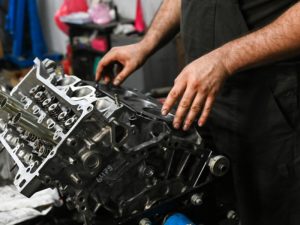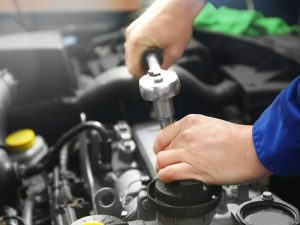Engine reconditioning is a complex process that requires specialised tools and equipment to restore an engine to its optimal performance. This guide will walk you through the essential equipment needed for engine reconditioning, how to choose the right tools, and safety measures to follow.
What is engine reconditioning, and why is it important?
Engine reconditioning is restoring a worn-out engine to its original operating condition. This involves dismantling the engine, thoroughly inspecting its internal components, repairing or replacing damaged parts, and carefully reassembling it. Reconditioning is essential for several reasons:
- Improved engine performance: A reconditioned engine often performs better than a new one.
- Increased engine life: Reconditioning can extend the life of your engine significantly.
- Cost-effective: It’s usually cheaper to recondition an engine than to replace it.
- Environmental benefits: Reconditioning helps reduce waste by reusing existing parts.
What essential tools do you need for engine reconditioning?
While a full-fledged engine reconditioning workshop requires specialised machinery, you can start with a basic toolset for smaller jobs. Essential tools include:
- Socket and wrench sets: For removing and installing engine components.
- Torque wrenches: To tighten bolts to the correct specifications.
- Pliers and screwdrivers: For various tasks.
- Engine stand: To support the engine during disassembly and reassembly.
- Cleaning supplies: To clean engine parts thoroughly.
- Measuring tools: Callipers, micrometers, and feeler gauges.
How do you choose the right equipment for your needs?
Selecting the right engine reconditioning equipment depends on the type of work you do. Consider the following:
- Type of engines: The type of engines you primarily work on will significantly influence your equipment needs. For instance, reconditioning diesel engines requires different tools and machinery than petrol engines. Consider the specific engine components, sizes, and materials you commonly encounter.
- Scope of work: The extent of your engine reconditioning services will determine the necessary equipment. If you handle fundamental overhauls, a standard set of tools might suffice. However, specialised machinery is essential for complex rebuilds involving cylinder boring, crankshaft grinding, or block alignment.
- Frequency of use: The frequency of engine reconditioning work impacts equipment investment. If you perform frequent overhauls, investing in high-quality, durable equipment can be cost-effective in the long run. Conversely, occasional work may justify purchasing less expensive tools or renting specialised equipment as needed.
- Budget: Engine reconditioning equipment ranges from affordable hand tools to industrial machinery. Establishing a budget that aligns with your business goals and financial capabilities is essential. Consider different equipment options’ return on investment (ROI) and prioritise based on your needs.
- Space: The available space in your workshop will influence the equipment you can accommodate. Large, specialised machines may require dedicated areas, while smaller tools can be stored efficiently. Assess your workspace to determine the suitable equipment size and configuration.
- Skill level: Your team’s technical expertise will impact the complexity of equipment you can effectively use. For those new to the field, consider investing in engine reconditioning training to enhance your team’s capabilities.
By carefully evaluating these factors, you can select the correct engine reconditioning equipment to optimise your workflow, improve efficiency, and enhance the quality of your engine rebuilds.
How do you maintain and care for your equipment?
Proper maintenance is crucial for the longevity and accuracy of your engine reconditioning equipment. Here are some tips:
- Regular cleaning: Remove dirt and debris after each use.
- Lubrication: Keep moving parts lubricated according to the manufacturer’s instructions.
- Storage: Store equipment in a clean, dry place to prevent rust and damage.
- Calibration: Regularly calibrate measuring tools for accuracy.
What safety measures should you follow when using engine reconditioning equipment?
Engine reconditioning involves working with heavy machinery and hazardous chemicals. Safety is paramount. Here are essential safety measures:
- Wear protective gear: Safety glasses, gloves, and a face mask are essential to shield your eyes, hands, and respiratory system from potential hazards.
- Proper ventilation: Ensure good ventilation when working with chemicals to prevent exposure to harmful fumes. Install exhaust fans or open windows to maintain fresh air circulation.
- Fire safety: Keep a fire extinguisher readily accessible in case of accidental fires. Regularly inspect and maintain the extinguisher to ensure its effectiveness.
- Machine safety: To prevent accidents and injuries, follow the manufacturer’s safety guidelines for all equipment and understand the specific safety features and operating procedures of each machine.
- Lifting safely: Use proper lifting techniques, such as lifting with your legs and avoiding twisting your back, to prevent strains and injuries. Consider using lifting aids for heavy components.
How can advanced engine reconditioning equipment enhance your work?
Advanced equipment can significantly improve efficiency and accuracy in engine reconditioning. Consider investing in:
- Cylinder honing machines: These are used for precise cylinder bore finishing.
- Crankshaft grinding machines: To restore crankshaft journals to their original dimensions.
- Cylinder head resurfacing machines: To ensure a flat cylinder head surface.
- Valve grinding machines: These are used to recondition valve seats and faces.
- Engine balancing machines: To ensure smooth engine operation.
Where can you find reliable engine reconditioning equipment suppliers?
Finding reliable suppliers for engine reconditioning equipment is essential for sourcing quality tools and machinery. Several avenues can be explored:
- Online retailers: Offer a vast selection of products, often with detailed descriptions and customer reviews. However, physical inspection and hands-on experience before purchase might be limited.
- Automotive equipment suppliers: Specialise in tools and equipment for the automotive industry, providing expertise and product knowledge. They often offer after-sales support and maintenance services.
- Used equipment dealers: Provide cost-effective options for budget-conscious buyers. Thorough inspection is crucial to assess the condition and functionality of used equipment.
Conclusion
Engine reconditioning is a skilled trade that requires the right equipment. You can achieve excellent results by investing in quality tools and following safety guidelines. Remember to choose equipment that suits your needs and budget.
Hyundai iLoad Engine Specialist: Your trusted partner
If you’re looking for professional engine reconditioning services for your Hyundai iLoad, look no further than Hyundai iLoad Engine Specialist. Our team of experts has the knowledge and equipment to restore your engine to peak performance. We offer a comprehensive range of services, including engine reconditioning, repair, and fitting. Contact us today for a quote.



